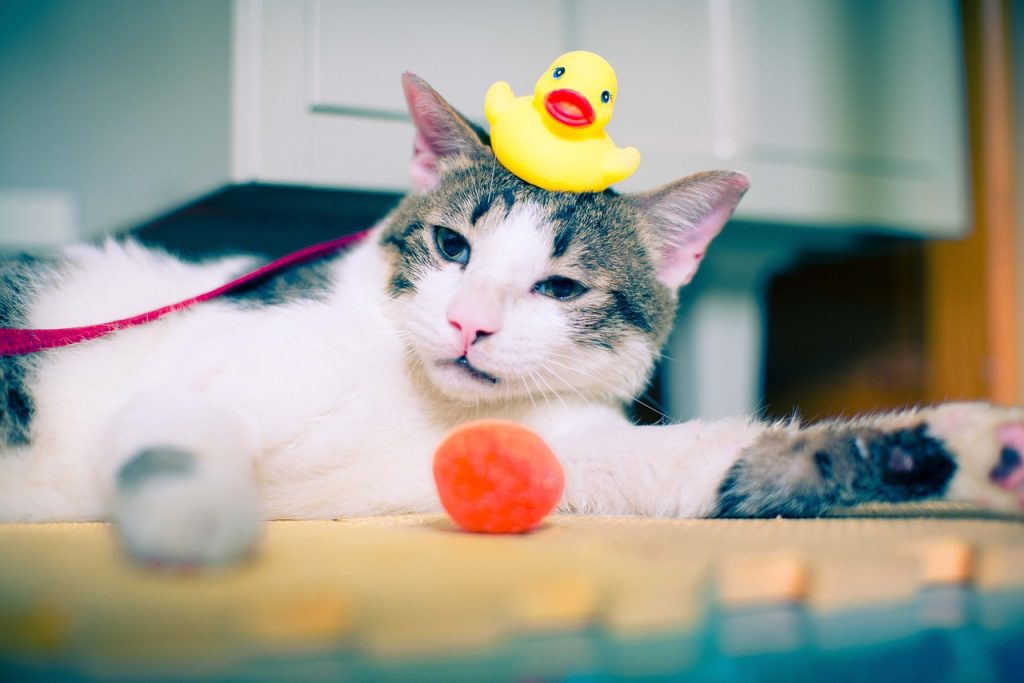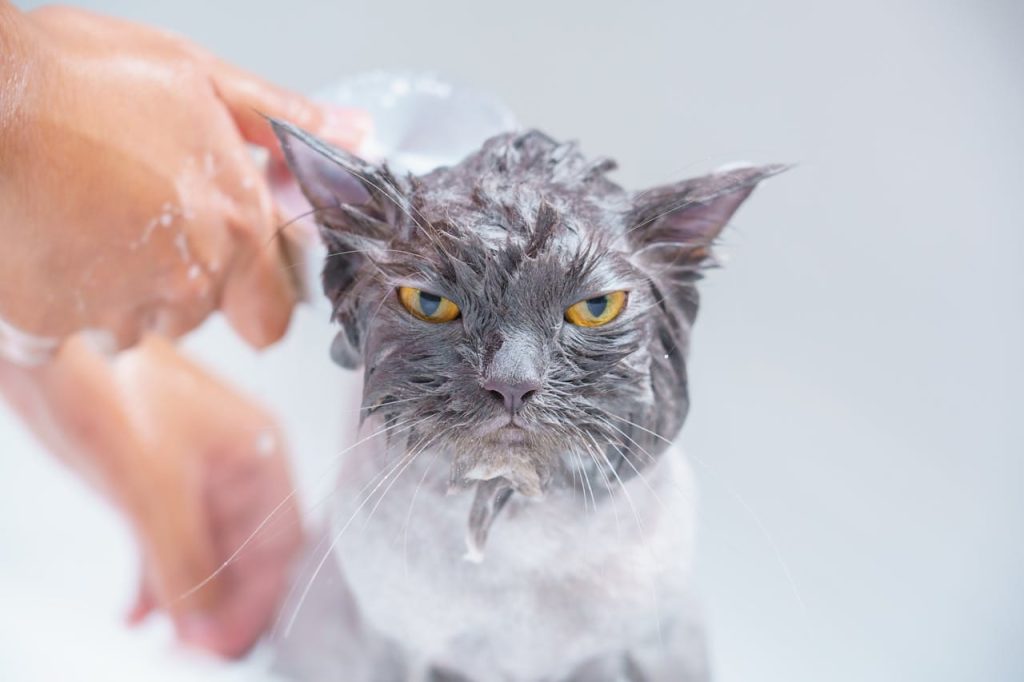Are you a cat owner pondering whether giving your feline buddy a bath is necessary? Well, you’re in luck! In this comprehensive guide, we’ll delve into the ins and outs of bathing cats. From the timing and frequency of baths to the best techniques and products, we’ve got all the bases covered in this cat bathing guide.
Bathing cats might seem daunting, especially if you’re new to it. But fret not! We’ll arm you with all the info and expert tips to make the experience as smooth as possible, both for you and your fluffy companion.
As we dive into the world of cat baths, we’ll also bust some myths. Ever wondered if bathing strips a cat’s fur of natural oils or if cats are truly self-cleaning? We’ll separate fact from fiction and give you the lowdown based on evidence.
Whether you’ve got a curious kitten or a seasoned cat, come along as we demystify the art of cat baths and ensure your furball’s hygiene is top-notch. Get ready to become a pro at keeping your beloved kitty squeaky clean and content!
Why Do Cats Need Baths?
Contrary to popular belief, cats don’t groom themselves to perfection. While they spend a good chunk of time licking their fur, it’s not enough to keep them spotless. Cats can still gather dirt, debris, and even parasites, especially if they roam outdoors.
Regular baths are crucial for keeping your cat healthy and happy. They help remove dirt, dander, and allergens from the fur, reducing the risk of skin issues and allergies. Baths also prevent the buildup of oils and bacteria that can lead to funky odors and skin problems.
Bathing becomes even more important for cats with certain health conditions like fleas, allergies, or skin infections. And for elderly or overweight cats who struggle with grooming, regular baths are a must for their hygiene.
Baths also give you a chance to check your cat’s skin and coat for any abnormalities, like lumps, bumps, or signs of pesky parasites. Spotting these early means quicker trips to the vet, keeping your cat in top shape.
Benefits of Bathing Cats
Beyond just being clean, baths offer several perks for cats:
- Reduces shedding: Baths help get rid of loose hair, reducing shedding and those delightful hairballs.
- Improves coat condition: Regular baths keep fur clean and shiny by removing dirt and excess oils.
- Prevents matting: Long-haired cats are prone to mats, which can be uncomfortable and lead to infections. Baths keep fur untangled.
- Alleviates allergies: Baths help remove allergens from fur, reducing itching and discomfort for cats with allergies.
- Relieves stress: While baths can stress cats initially, with time and patience, it can become a calming experience.
When you think about these benefits, baths aren’t just about hygiene; they’re about keeping your cat in tip-top shape.
When to Bathe Your Cat
Now that we’ve sold you on the idea of cat baths, let’s talk timing. How often should you dip your cat in water? It depends on a few things like lifestyle, coat type, and health issues.
- Outdoor cats: If your cat explores the great outdoors, they’ll likely need baths every 2-3 months to stay fresh.
- Indoor cats: They need baths less often, but aim for every 4-6 months to keep things tidy.
- Medical needs: Cats with health issues may need more frequent baths as part of their treatment plan.
- Coat type: Long-haired cats might need more baths to avoid matting, while short-haired ones can go longer between baths.
Every cat is unique, so watch their behavior and coat to figure out the best bathing schedule.
How to Prepare for Cat Bathing
Before you start the splash fest, prep yourself and your cat:
- Gather supplies: Get everything you need – cat-friendly shampoo, towels, a non-slip mat, and a hairdryer if you use one.
- Choose the spot: Pick a warm, quiet space for bath time, like a bathroom or laundry room.
- Trim nails: To avoid scratches, trim your cat’s nails. If you’re nervous, use soft nail caps instead.
- Ease into water: If your cat’s wary of water, introduce it slowly. Start with shallow bowls of water and reward bravery with treats.
With these pre-bath steps, you’ll set the stage for a smooth bathing experience.

Steps to Bathe Your Cat
Now, let’s get wet! Follow these steps for a successful cat bath:
- Brush first: Smooth out tangles and remove loose hair before getting wet.
- Check water temp: Make sure it’s just right – not too hot, not too cold.
- Wet gently: Start from the neck down, avoiding ears and eyes.
- Lather up: Use cat-friendly shampoo and massage it in gently.
- Rinse thoroughly: No soap suds left behind!
- Towel dry: Pat dry gently with a soft towel or use a low setting on a hairdryer.
And don’t forget the treats and praise – positive vibes make for happy cats.
Tips for a Successful Cat Bathing
Bathing cats isn’t a walk in the park, but these tips can help:
- Start early: Introduce baths to kittens to make them less scary.
- Take it slow: Gradually get cats used to water to ease anxiety.
- Be positive: Treats and cuddles make baths less of a chore.
- Handle with care: Be gentle and calm to build trust.
- Protect ears: Prevent water from entering ears with cotton balls.
- Try grooming gloves: Some cats prefer these to sprays.
With these tricks, bath time can be a breeze for both of you.
Cat-Friendly Bathing Products
Choose products with care:
- Shampoo: Opt for mild, cat-specific shampoos – human ones can be too harsh.
- Tools: Invest in good brushes and combs for your cat’s coat.
- Sprayers: Gentle streams work best for wetting fur.
- Towels: Soft, absorbent towels are kitty favorites.
- Hairdryers: If your cat tolerates them, use on low heat and speed.
Always go for products made for cats’ sensitive skin.
Common Bathing Mistakes to Avoid
Don’t fall into these traps:
- Hot water: Lukewarm is the name of the game.
- Skipping brushing: Tangles can lead to mats, so brush first.
- Safety first: Keep bath areas hazard-free.
- Don’t rush: Take your time; rushing stresses cats out.
- Wrong shampoo: Stick to cat formulas to avoid irritation.
- Positive vibes only: Praise and treats go a long way.
Avoiding these slip-ups makes for smoother baths.

Alternatives to Baths
If your cat’s a water hater, consider these options:
- Dry shampoo: Sprinkle on and brush out for a quick clean.
- Wet wipes: Handy for spot cleaning.
- Waterless foams: Rub in for a bath-free cleanse.
Consult your vet to pick the best method for your cat.
Conclusion
With this guide, you’re armed with all the info you need to conquer cat baths like a pro. Bathing keeps your cat healthy and happy, so don’t shy away from it.
Whether you opt for traditional baths or alternative cleaning methods, stay patient and positive. Your cat’s well-being is worth it!
So, gather your supplies, prep your cat, and dive into the wonderful world of cat baths. Your feline friend will thank you for it!






